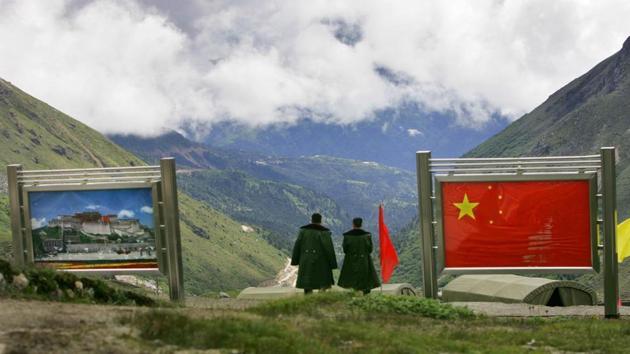Lessons for India and China from 1967 Nathu La clash
The current India-China standoff along the frontier in Sikkim is similar to one in 1967 that led to four days of bloody clashes between the soldiers of the two countries.
The bloody clashes between Indian and Chinese troops nearly 50 years ago at Nathu La in Sikkim, the scene of an ongoing standoff, are a grim reminder of how the unsettled border of the two countries has triggered hostilities.

The fighting that erupted on September 11, 1967 was preceded by months of accusations from both sides about incursions and territorial intrusions.
The language used by China at that time to warn Indian authorities was strikingly similar to the aggressive narrative emanating from Beijing five decades later. It even included references to the 1962 border war, which was fresh in the minds of military commanders on both sides at the time.
“The Chinese Government must tell the Indian Government in all seriousness: You must draw lessons from your past experience, stop provocative activities along the China-Sikkim border and cease all your calumnies against China, otherwise you are bound to eat the bitter fruits of your own making,” said a note handed over by China’s foreign ministry to the Indian embassy in Beijing on April 11, 1967.
On September 10, a day before hostilities broke out, the foreign ministry issued another terse warning , calling Indian leaders “reactionaries” who were “component part of the worldwide anti-Chinese chorus currently struck up by US imperialism and Soviet Revisionism in league with the reactionaries of various countries”.
The message, sent to New Delhi through the Indian embassy, said: “The Chinese Government sternly warns the Indian Government: the Chinese Border Defence Troops are closely watching the development of the situation along the China-Sikkim boundary. Should the Indian troops continue to make provocative intrusions, the Indian Government must be held responsible for all the grave consequences.”
The external affairs ministry countered the Chinese allegations with its own version of events, saying China’s troops had violated agreements.
“The Chinese Government is well aware that the Sikkim-Tibet border is a well-defined international border and has been recognised as such by China. By launching an armed attack the Chinese Government is seeking to build up tension at a point on the border which has never been in dispute,” the external affairs ministry told Beijing in a note.
The initial clashes in 1967 lasted four days. While the 1962 war was a debacle for New Delhi, the Indian Army proved more than a match for the Chinese five years later. According to an account of the clashes written by Maj Gen Sheru Thapliyal, who was posted in Sikkim at the time, the Indian side lost more than 70 soldiers while the Chinese casualties were more than 400.
“We gave them a bloody nose,” a former Indian diplomat told Hindustan Times.
A second round of clashes erupted at Cho La on October 1, 1967, leading to more casualties. But Indian troops stood their ground and forced the Chinese soldiers to withdraw at Cho La.
Since then, the border in the Sikkim sector has remained free of violence. In 1967, Sikkim was a protectorate of India and it joined the Indian union as a state in 1975. China recognised the frontier in the Sikkim sector in 2003.
The last bullet fired along the China-India frontier was in the Arunachal Pradesh sector in October 1975 , when border patrols from the two sides accidentally came face-to-face amid dense fog at Tuhung La and an Indian soldier was killed. This is often cited by Indian politicians and diplomats to drive home how calm the boundary with China is, say, compared to that with Pakistan.



